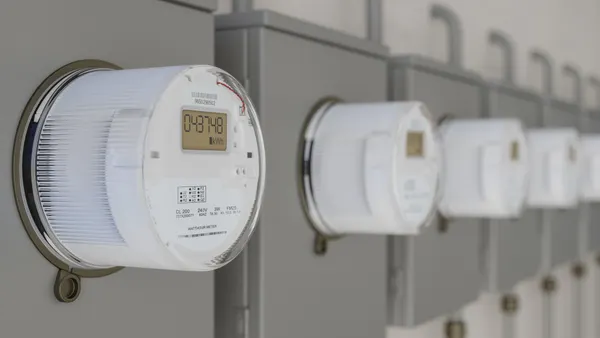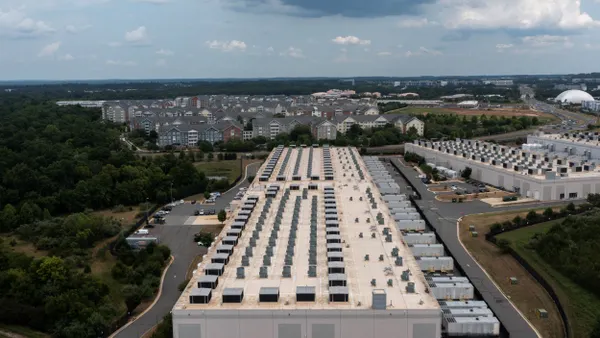This opinion piece is the first in a series from Energy Innovation's policy experts on advancing an affordable, resilient and clean energy system.
As the United States moves to a clean electricity system, policymakers and utilities are prioritizing equity as a utility regulation goal to address our long history of environmental injustice (EJ). To guide this process, the federal government and several states have outlined approaches to an equitable transition, including investment targets and community engagement goals. However, without a method for targeting funding to those who need it most, tracking progress is impossible.
Many of these states including California, Colorado, Illinois, Massachusetts and New York, have passed legislation requiring environmental justice be incorporated into electric utility regulation decisions or statewide energy programs. Now, with the passage of the Infrastructure Investment and Jobs Act, continued discussions around the Build Back Better Act, and state-level net-zero targets, trillions of dollars and a just transition are on the line.
Several states currently use mapping tools to identify communities most at risk for environmental injustice, providing regulators and utilities with clear metrics for improving equity. The most useful tools incorporate community input, highly localized data, and analyze cumulative impacts.
For those regions that do not have a process for prioritizing communities, state agencies and utility commissions should support map creation. Since this process can be lengthy, it must start as soon as possible. These tools are only as good as the underlying data, so policymakers should also back efforts to support data collection and offer self-reporting. Absent these tools, policymakers, the public or utilities cannot know if investments are achieving their stated goal, representing both an inefficiency and an injustice.
State efforts to identify and prioritize environmental justice communities
To advance environmental justice and achieve equity goals, state agencies need to clearly identify which communities face lower degrees of protection from environmental health hazards. Mapping tools combining place-based data sets provide an excellent method for community identification.
Using these tools to identify communities facing disproportionate burdens first requires determining which factors demonstrate environmental injustice including pollution sources, demographics, including race and income, and public health. But the process must also recognize that each contributing factor to environmental injustice compounds upon the others.
For example, people living in communities with high pollution levels often experience multiple external factors that increase the risk of this pollution, such as substandard housing and lack of access to health care. Determining these kinds of cumulative impacts is the first step toward prioritizing communities most likely to experience negative environmental effects.
Several states have made significant progress quantifying cumulative impacts and creating maps to identify communities suffering most from historical and current environmental injustices (EJ or "disadvantaged communities"). California is one such leader and established the mapping tool CalEnviroScreen in 2013 to rank all census tracts in the state by a relative score.
Since California created CalEnviroScreen, several states — including Maryland, Michigan, New York and Washington — have followed suit, identifying indicators and creating maps that highlight communities experiencing the highest cumulative impact levels.
These efforts have since formed the basis for allocating state resources to these communities. In California, for instance, the tool is used extensively by policymakers and regulators to target investments and evaluate progress. The California Public Utilities Commission used CalEnviroScreen to structure its "Solar on Multifamily Affordable Housing Program," which is awarding up to $100 million a year over 10 years for projects in disadvantaged communities. The tool is also used for program evaluation, such as assessments of the impact of utility transportation electrification programs on emissions reductions in disadvantaged communities.
Washington State’s King County used the Washington Environmental Health Disparities map to develop a six-year Equity and Social Justice Strategic Plan, and will use the mapping tool to measure progress over time.
Public outreach used to develop these tools was a key factor in unlocking the data-driven decision-making they offer. For example, Washington held 12 listening sessions across the state, ensuring that a wide variety of communities directly engaged in the tool’s creation.
Data differ in each of the state tools, as environmental concerns and data availability vary. California uses a pesticide indicator due to its large agricultural sector, while lead and lead paint are more important to environmental justice communities in Michigan. EJ communities are far from a monolith, so policymakers must consider each region’s unique concerns.
Federal efforts have lagged leading states but are underway
At the federal level, the U.S. Environmental Protection Agency (EPA) has many available EJ data sets that can provide a foundation for regulator and utility assessments, including air toxics cancer risk, particulate matter, lead paint, and proximity to hazardous waste. EPA has used this data, alongside demographic information, to develop the EJSCREEN mapping tool. While EJSCREEN cannot analyze cumulative impacts or identify EJ communities, the publicly available data can support the formation of subnational tools to identify communities and direct funds.
In addition to EJSCREEN, President Biden’s Jan. 27 executive order directed the creation of a "Climate and Economic Justice Mapping Tool" to identify cumulative impacts across the country and improve consistency in program implementation. This is a crucial step toward the administration’s Justice40 goal of directing 40% of the benefits from the clean energy transition to EJ communities, and the administration plans to release a beta version of this tool in early 2022.
High-quality data is lacking
When trying to quantify EJ, however, it is crucial to recognize these quantifications are only as good as the underlying data. Unfortunately, the quality and quantity of EJ-related numerical data varies widely across the country, and the U.S. is far from having nationally consistent data sets that encompass all EJ issues.
Due to data gaps, any comprehensive mapping tool must provide options for self-identification as an EJ community or incorporation of qualitative data. The Illinois Solar for All program, which aims to allocate 25% of funding toward EJ communities, provides an application for communities to use with clear and detailed instructions for self-designation.
Data improvement is also important, particularly in terms of granularity. Environmental hazards such as air pollution can vary block-by-block, whereas national air quality monitoring systems measure air quality more broadly. In 2020, the U.S. Government Accountability Office found the status of the national air quality monitoring system sorely lacking. Without updated sensors and more granular data, electric utility regulators and others will have a difficult time prioritizing power plant retirement and community reinvestment to achieve equity goals.
This problem also extends to water pollution and other hazards. Success requires significant nationwide pollution monitoring hardware investment and data granularity improvements through mobile sensors and high-resolution remote sensing data. This is likely outside the purview of utility investment, highlighting the need for utility stakeholders to engage with other state agencies.
Data collection is also an opportunity to further engage communities, as demonstrated by air quality monitoring company Aclima, which employs community members in their mobile monitoring work. Because it often takes years to implement these systems, policymakers must start now to increase the effectiveness of future EJ investments.
How can policymakers create a consistent way to measure environmental justice issues and progress toward goals?
As states consider the best ways to improve equity through utility policy, they will need both legislative and regulatory approaches. Legislation is one of the best ways to ensure funding for tool creation and updates, so utility stakeholders should support legislative efforts in this space. However, public health and environmental agencies should not wait for a legislative mandate to begin work on determining and mapping cumulative impacts — the process should start today.
While data quality still needs improvement, policymakers should not allow this barrier to prevent creation of useful tools. Many data sources are available already, including the publicly available data used in EJSCREEN, that just need to be combined using a cumulative impacts methodology and any other available regional or state level data to create EJ scores. This process has been used to create several state-level tools, including those in Michigan and Washington .
With trillions of dollars of new clean energy investments expected over the next decade, now is the time to adopt mapping and data collection tools that can ensure these investments are reaching communities that have historically missed out on economic opportunities and experienced the worst environmental health impacts.














